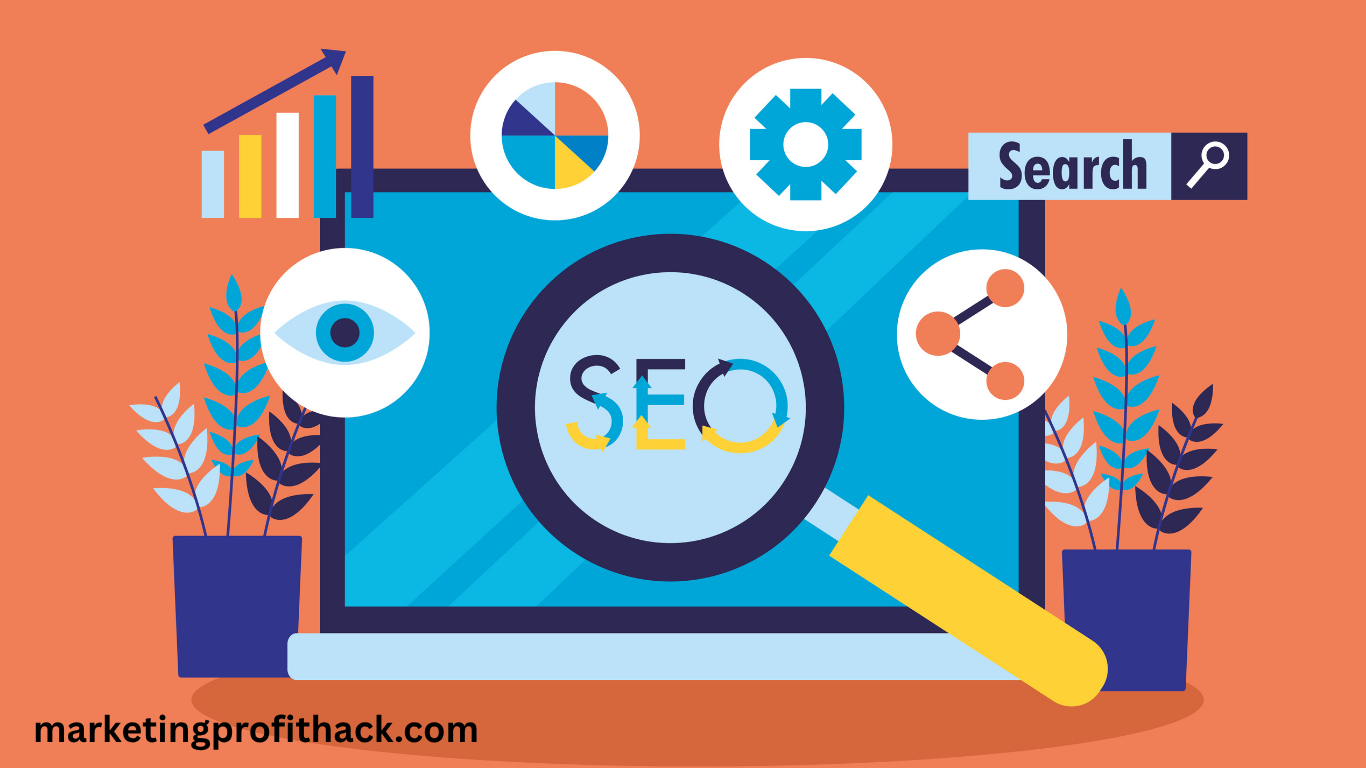The Dropshipping SEO Guide: 19 Tactics to Get Organic Sales for Free

Strong 8k brings an ultra-HD IPTV experience to your living room and your pocket.
Welcome to my article "The Dropshipping SEO Guide: 19 Tactics to Get Organic Sales for Free" . Let's be honest: running Facebook ads at midnight while your ROAS cries in the corner is not the dream you signed up for when you started dropshipping. You wanted passive income, not passive-aggressive ad comments. So if you're tired of burning money on paid traffic and ready to let Google do some of the heavy lifting for free - you're in the right place.
Welcome to The Dropshipping SEO Guide: 19 Tactics to Get Organic Sales for Free. Yes, free, as in "no credit card required" and "your bank account won't flinch." SEO (Search Engine Optimization) may not be as sexy as TikTok trends or one-click funnels, but it's the quiet hero behind long-term, cha-ching success. It's how your dream customers find you at 2 AM while binge-searching for "cute dog beds" or "best minimalist wallets under $30."
In this guide, we're breaking down 19 practical, beginner-friendly SEO tactics tailored specifically for dropshippers - no jargon, no fluff, and no "just write great content" advice. From keyword hacks and product page optimization to backlink strategies and secret schema sauce, you'll learn how to turn your store into a search-engine magnet.
So grab your notebook (or, let's be real, open a new Google Doc you'll forget about later), and let's turn your store into a 24/7 sales machine - no ad spend, no stress, all strategy.
Proven Formula for $50-$100 Daily Income with 0 COST - Watch This FREE Video >>
Keyword Research for Dropshipping That Actually Converts
Keyword research isn't about chasing the biggest search numbers - it's about tapping into the buyer's brain. It's how you show up right when someone's ready to buy, not just when they're "doing research." Let's turn your product pages into silent sales machines using search terms that actually convert.
What Are Buyer-Intent Keywords (and Why You Need Them)?
Not all keywords are created equal. Some attract researchers, others attract buyers. You want the latter.
Buyer-Intent Keyword Examples:
"Buy minimalist wallet online"
"Best resistance bands for beginners"
"Affordable LED desk lamp with USB port"
These people aren't browsing - they're ready to buy. Targeting these keywords increases your chances of turning visitors into customers.
Avoid These (For Product Pages):
"What is a minimalist wallet"
"How to start working out at home"
"Benefits of LED lighting"
These are great for blog content, but not for selling directly.
Where to Find Dropshipping Keywords for Free
You don't need a $99/month tool to get started. Use these beginner-friendly (and free) tools:
1. Google Autocomplete & Related Searches
Type your product idea (e.g., "wireless earbuds") and see what suggestions appear.
"wireless earbuds under $50"
"wireless earbuds with mic for Zoom"
2. AnswerThePublic
This goldmine of real-world questions helps you find long-tail keywords, especially for blog content.
3. Amazon & Etsy Suggestions
These platforms show real buying behavior. Look for:
Frequently bought keywords
Bestsellers in your niche
Filters like price, color, size = keyword modifiers
4. Ubersuggest & Keywords Everywhere
These show monthly search volume, CPC (how valuable the term is), and competition level. Look for:
Volume above 300/month
Low to medium competition
CPC above $0.50 (shows commercial intent)
How to Choose Keywords That Actually Make You Sales
Finding keywords is one thing - choosing the right ones is where most dropshippers mess up.
Use These Filters:
Specific > Generic: "gaming mouse pad with wrist support" is better than "mouse pad"
Problem-Solution Style: "shoe insoles for flat feet" or "standing desk for small spaces"
Niche Angle: Add target audiences like "for teens," "for travelers," "for pet owners"
Avoid:
Broad, ultra-competitive terms ("shoes," "water bottle")
Keywords with no clear intent to purchase
Keywords unrelated to your actual products (yes, it happens a lot)
Bonus: Use Long-Tail Keywords Like a Pro
Long-tail keywords (4+ words) bring in lower traffic, but higher conversion rates.
Example:
Instead of targeting "neck pillow" (too broad), try:
"neck pillow for long flights"
"memory foam travel pillow under $20"
"washable neck support pillow for kids"
You'll face less competition, rank faster, and attract people who are closer to buying.
Organize Your Keywords for Maximum Impact
Create a simple spreadsheet to keep things organized:
KeywordIntent TypeVolumeCompetitionAssigned Pageergonomic laptop stand under $30Transactional880LowProduct Pagebest laptop stands for neck painInformational1,100MediumBlog Article
Match each keyword to a specific page or blog post so your entire store works like an SEO machine.
Quick FAQs: Dropshipping Keyword Research
Q1: What's the difference between short-tail and long-tail keywords?
Short-tail = broad ("sneakers"). Long-tail = specific and higher intent ("white sneakers for flat feet under $50").
Q2: Should I use the same keywords on every product?
No. Each page should target unique keywords to avoid cannibalizing your own rankings.
Q3: Can I use AI to help with keyword research?
Absolutely! Tools like ChatGPT can help brainstorm variations, FAQs, and blog titles based on core keywords.
Q4: How many keywords should I target per page?
Focus on 1 primary keyword and 2–4 related keywords that support it naturally in your content.
On-Page SEO Tactics for Product and Collection Pages
Because if Google can't find your product, neither can your customer
You've found the perfect product. Your images look sharp, your price is competitive, and you've even added a countdown timer (because urgency, right?). But here's the kicker: if your product page isn't optimized for SEO, it might as well be invisible. And in the world of dropshipping, invisible = broke.
On-page SEO is like dressing your store up for Google's algorithmic dinner party. If you don't follow the dress code - clear structure, juicy keywords, and mobile friendliness - Google politely ignores you (rude, but true). Let's fix that.
1. Craft SEO-Friendly Product Titles (No Keyword Stuffing, Please)
Don't name your product "Super Cool Awesome Bluetooth Speaker 2025!!!" and expect Google to love it. Be clear, concise, and descriptive.
Bad: Wireless Earbuds
Better: Bluetooth Wireless Earbuds with Charging Case - Noise Canceling
Best: Waterproof Bluetooth Earbuds with Mic & Charging Case - Ideal for Sports & Travel
Include:
Main keyword
Key features (e.g., waterproof, noise-canceling)
Target audience or use-case if possible
2. Write Unique & Conversion-Focused Product Descriptions
Copy-pasting from AliExpress? Stop. Right. There.
Google hates duplicate content like your cat hates bath time. Plus, original descriptions help convert visitors.
Instead of:
"High quality. Best product. Easy to use."
Try:
"Stay powered through every workout with these waterproof Bluetooth earbuds, designed for runners, gym-goers, and anyone tired of tangled wires."
Use bullet points, emotional triggers, and benefits - not just features.
3. Optimize Meta Titles and Descriptions
Your meta title is what shows up in Google search. It should make someone stop scrolling.
Example Meta Title:
"Waterproof Bluetooth Earbuds - 20-Hour Battery Life | Free Shipping"
Proven Formula for $50-$100 Daily Income with 0 COST - Watch This FREE Video >>
Example Meta Description:
"Shop top-rated Bluetooth earbuds with mic & charging case. Sweat-proof, noise-canceling, and perfect for workouts. Free shipping on all orders!"
Keep titles under 60 characters and descriptions under 155.
4. Use Alt Text for Images (AKA Describe It Like You Would to Grandma)
Alt text helps with SEO and accessibility. It tells Google what your image is about.
Don't write: image1.jpg
Write: woman wearing black waterproof Bluetooth earbuds while jogging
Bonus: Alt text can help you rank in Google Image Search (aka free traffic jackpot).
5. Internal Linking (Link It Like You Mean It)
Add links from your product pages to your:
Blog posts ("Want to see how these earbuds compare to AirPods?")
Related products ("Bundle with our wireless charging dock")
Collections ("See more: Workout Accessories")
Internal linking improves SEO and keeps visitors on your site longer - win-win.
6. Mobile Optimization (Because 70%+ of Your Traffic Is on Phones)
Use a responsive theme. Check loading times. Make sure buttons are tap-friendly and not hiding behind popups like introverts at a party.
7. Add Structured Data (a.k.a. Schema Markup)
Sounds techy, but Shopify apps like "JSON‑LD for SEO" make this easy. Schema helps Google show rich results like:
Product price
Reviews
Availability
Which = More trust. More clicks. More sales.
On-Page SEO FAQs for Dropshippers
Q1: How long should my product descriptions be?
Long enough to answer buyer questions, short enough to stay engaging. Aim for 150–300 words per product.
Q2: Should I repeat my main keyword multiple times?
Use it naturally. No need to say "Bluetooth Earbuds" 14 times in one paragraph. Google's smart enough to get the idea.
Q3: Can I use emojis in my titles or descriptions?
Sure - especially in meta descriptions.
But don't overdo it or make your page look like a spammy text message from 2012.
Q4: What's the best image size for SEO?
Keep images under 200KB, use WebP or compressed JPEG, and maintain clarity. Bonus: Use descriptive filenames, like wireless-earbuds-black.jpg.
Q5: Is it worth optimizing collection pages too?
Yes, yes, and YES. Add a brief intro at the top of collection pages with relevant keywords. E.g., "Shop our curated collection of affordable ergonomic chairs for home offices."
Content Marketing That Drives Free Traffic
Because your blog should be your unpaid sales rep, not a dusty ghost town
Let's get one thing straight - content marketing isn't just for bloggers or YouTubers sipping green smoothies in Bali. If you run a dropshipping store and want free, targeted traffic that sticks around and actually buys stuff, then content marketing is your new best friend.
Done right, your content can rank on Google, go viral on Pinterest, get picked up by Reddit, or help a customer decide your LED moon lamp is better than the other 57 they've seen.
And no - you don't need to be a "writer." You just need strategy, consistency, and a little help from AI or templates (hi
).
Why Content Marketing Works for Dropshipping
Builds trust: People don't trust faceless stores, but they trust helpful, informative content.
Targets long-tail keywords: "Best gifts for cat dads under $30" hits different than just "cat mug."
Drives consistent traffic: One blog post can bring you traffic for months, unlike an ad that dies after 48 hours.
Boosts SEO: Google loves sites with relevant, valuable content.
4 Simple Content Types That Work (Even If You Hate Writing)
1. Product Comparisons
Example: "AirPods vs. $29 Bluetooth Earbuds - Which Are Worth It?"
Perfect for targeting "vs" and "alternative to" keywords. Include your product as the hero.
2. Gift Guides & Roundups
Example: "15 Gift Ideas for Dog Moms That'll Make You the Favorite Child"
Insert your product as #5. Thank me later.
3. How-To Articles
Example: "How to Set Up a Cozy Home Office for Under $100"
Great for subtle product plugs and solving real problems.
4. Niche Tips or Buyer's Guides
Example: "The Ultimate Guide to Choosing the Right Neck Pillow for Travel"
SEO gold + trust builder.
Too Busy? AI's Got You.
Use tools like ChatGPT to:
Brainstorm blog topics
Write outlines
Draft content
Repurpose product FAQs into blog intros or comparison posts
You can also turn one blog post into:
A short video
A carousel on Instagram
A Pinterest pin
An email newsletter
Because in content marketing, one piece = five platforms if you're clever.
Content Marketing FAQs for Dropshipping
Q1: Do I need a blog on my dropshipping store?
Yes - if you want free, long-term traffic and better SEO. Even 2–3 blog posts a month can make a difference.
Q2: How long should a blog post be?
Aim for 1,000–1,500 words for SEO. But don't just add fluff - give real, helpful info (and maybe a meme or two).
Q3: Can I write about topics not directly related to my products?
Yes - as long as they attract your target audience. For example, if you sell camping gear, a blog on "Best Places to Camp in 2025" makes perfect sense.
Q4: What if I don't have time to write?
Outsource it, use AI, or batch-create once a month. Or combine all three - smart marketers do.
Q5: How do I know what topics to write about?
Use:
Google Autocomplete (type in your niche and see what pops up)
AnswerThePublic (great for questions)
Your customers' actual FAQs
Keyword tools (like Ubersuggest, Ahrefs, etc.)
Q6: Where should I promote my content?
Pinterest (great for guides and gift lists)
Facebook Groups
Reddit communities
Your email list
Your product pages (internal linking!)
Pro Tip:
Add a content calendar to your routine. Just 2 blog posts + 2 repurposed social content pieces per week = a machine of traffic by month 3.
Link Building Without Being Spammy or Broke
Because begging strangers on the internet for backlinks is not a vibe
You've heard it a thousand times: "Backlinks are the secret sauce of SEO." And yes, they are - but only when they're done right. If your link-building strategy involves shady Fiverr gigs or "I'll link to you if you link to me" deals from 2008, please… just close the tab and back away slowly.
For dropshipping stores, link building can feel like a mystery. You're not exactly running a Harvard blog or launching the next iPhone. But guess what? You don't need a billion-dollar brand to earn high-quality links. You just need creativity, consistency, and a few smart plays that won't drain your wallet or reputation.
Let's break down how to get those juicy backlinks - without sounding desperate or turning into a full-time outreach robot.
What Are Backlinks, and Why Should You Care?
Backlinks are links from other websites that point to yours. Think of them as digital upvotes. The more credible sites that link to you, the more Google thinks:
"Hey, this site must be legit!"
And boom - you rise in search rankings.
Backlinks =
Higher rankings
More traffic
More trust
(Hopefully) more sales
But here's the key: quality > quantity. One link from a legit blog beats 100 from shady directories or expired coupon sites.
Proven Formula for $50-$100 Daily Income with 0 COST - Watch This FREE Video >>
5 Affordable (and Ethical) Ways to Build Links
1. Create Link-Worthy Blog Content
Posts like "Top 10 Gifts for Coffee Lovers" or "Best Eco-Friendly Kitchen Products" tend to get shared naturally - especially if you include data, humor, or unique angles.
Pro tip: Add original stats, product comparisons, or infographics to make it "link bait."
2. Guest Post (Without Being Annoying)
Find blogs or niche websites related to your products. Offer them a free, well-written article in exchange for a backlink to your store or blog.
How to ask:
"Hey [Name], I love your post on [topic]. I'd love to contribute a useful guide for your audience around [niche topic]. Would you be open to a guest post?"
Works better than: "Dear Sir/Madam, I am SEO expert, link now please."
3. Use HARO (Help a Reporter Out)
Sign up at helpareporter.com and respond to journalist requests. If they use your quote, they'll usually link to your site.
Bonus: Free exposure + backlinks from media sites like Forbes, Business Insider, or niche blogs.
4. Get Listed on Resource or "Best Of" Pages
Look for roundup posts like:
"Top 10 Dropshipping Tools for Beginners"
"Best Shopify Stores to Follow in 2025"
Reach out and ask if they'd consider adding your store or blog (especially if your design is on point or your content is actually helpful).
5. Build Internal Links First
Before chasing external links, optimize your internal linking:
Link blog posts to product pages
Link collections to each other
Link helpful pages to your homepage
Google loves a well-connected site. It's like SEO feng shui.
Link Building FAQs for Dropshippers
Q1: Can I just buy backlinks and call it a day?
You can, but it's risky. Low-quality paid links can get your site penalized by Google faster than you can say "algorithm update." If you must pay, make sure it's for legit editorial placements, not link farms.
Q2: How many backlinks do I need to rank?
It depends on your niche and competition. Some keywords require just a few quality links, while others need a strong backlink profile + optimized content. Focus on building steady, relevant links over time.
Q3: Do product pages need backlinks too?
Yes! While blog content naturally attracts links, linking directly to your best-selling product pages can give them a big boost in rankings. Just make sure the anchor text fits naturally.
Q4: What's the difference between nofollow and dofollow links?
Dofollow: Passes SEO "juice" and helps with rankings
Nofollow: Doesn't directly help SEO, but still useful for traffic and credibility
Both are valuable, but aim to build more dofollow links over time.
Q5: Is it worth hiring someone to do link building?
Only if they're reputable and focus on white-hat methods. Avoid anyone promising 1,000 backlinks in a week - unless your goal is to vanish from Google forever.
Q6: How do I check my backlinks?
Use tools like:
Ahrefs (best, but paid)
Ubersuggest (freemium)
Google Search Console (free and accurate)
Track which pages are getting links, and double down on what's working.
Final Thought:
Link building doesn't have to be sleazy or expensive. Be helpful, be human, and be persistent. Google rewards those who play the long game - and your store deserves to be seen.
Technical SEO Tweaks That Boost Rankings
Because even the prettiest dropshipping store won't rank if it loads like it's on dial-up
If on-page SEO is your store's outfit, technical SEO is the behind-the-scenes crew - the lighting, stage setup, and sound check. It's not flashy, but without it, the whole show flops.
Think of Google like an impatient customer: if your site takes too long to load, isn't mobile-friendly, or confuses its little robot brain with broken links - it's out. No ranking, no organic traffic, no cha-ching.
But don't worry. You don't need a web dev degree or a shrine to the Google gods to get this right. Just a few smart tweaks can help your store load faster, get indexed properly, and climb those sweet search results - especially if you're using Shopify, WooCommerce, or another user-friendly platform.
1. Improve Site Speed (Because Slow = No)
Speed isn't just a UX bonus - it's a ranking factor. Plus, no one wants to wait 7 seconds for your product images to load. They'll bounce faster than you can say "cart abandonment."
How to fix it:
Compress images (use WebP or TinyPNG)
Use lazy loading for images
Avoid app overload (too many plugins = slow site)
Pick a fast theme (Shopify speed-optimized themes are worth it)
Use PageSpeed Insights or GTmetrix to test your site speed.
2. Make Sure It's Mobile-First
More than 70% of your visitors will be on mobile. If your site's clunky on their phone, they're gone. Google's Mobile-First Index means your mobile site is your main site - not an afterthought.
Checklist:
Are buttons easy to tap?
Is text readable without zooming?
Is navigation smooth and scroll-friendly?
Use Chrome DevTools or Google's Mobile-Friendly Test to check.
3. Create a Clear, Crawlable Site Structure
Search engines are like toddlers - they need simple instructions and a logical structure.
Tips:
Use a clear hierarchy: Home > Collections > Products > Blog
Keep URLs short and descriptive
Good: /products/waterproof-bluetooth-earbuds
Bad: /product?id=12734&cat=23xyz
Create an HTML sitemap (for users) and an XML sitemap (for Google)
Most platforms do this automatically - just make sure it's submitted to Google Search Console.
4. Use Google Search Console (Like, Actually Use It)
Search Console is free and full of juicy SEO data. Use it to:
Submit sitemaps
Monitor keyword rankings
Fix indexing issues
Find crawl errors or broken links
Set it up at: https://search.google.com/search-console
5. Add Schema Markup (a.k.a. Rich Results)
Schema is like giving Google a cheat sheet. It helps your product listings show up with:
Star ratings
Price
Stock status
Product images in search
Use apps like JSON-LD for SEO (Shopify) or RankMath (WordPress) to auto-add this data.
6. Fix Broken Links & 404 Errors
A bunch of broken links tells Google: "Hey, this site doesn't care about its user experience." And that's not the message you want to send.
Tools to use:
Broken Link Checker
Screaming Frog SEO Spider
Ahrefs (premium but powerful)
Fix or redirect broken pages to the most relevant active page - using 301 redirects.
7. Avoid Duplicate Content
Using manufacturer descriptions or copying from other sites? Google's not impressed.
Use original descriptions, unique meta tags, and canonical tags to avoid SEO penalties - especially on product variants or similar pages.
8. Minimize Redirect Chains
A redirect is fine. A redirect → to another redirect → to another redirect = not fine.
Check your redirect chains and keep it simple:
Page A → Page C
NOT Page A → Page B → Page C
Technical SEO FAQs for Dropshipping
Q1: Do I need a developer for technical SEO?
Not unless you're doing something super advanced. Most tweaks (like image compression, speed boosts, and mobile-friendliness) can be done using apps, plugins, or tutorials.
Q2: How often should I check technical SEO issues?
Run a basic audit once a month, or at least quarterly. Tools like Screaming Frog or Sitebulb can help you automate this.
Q3: What's a sitemap, and do I need one?
A sitemap is like a directory of your site. You absolutely need one - it tells Google what pages exist and how to crawl them. Most platforms auto-generate this.
Q4: My site is fast on desktop but slow on mobile - what gives?
Check your image sizes, font loading, popups, and layout shifts. Mobile devices have less processing power and slower connections - keep it lean and clean.
Q5: Does using too many Shopify apps hurt my SEO?
Yes, especially if they load scripts or animations on your pages. Remove unused apps and avoid overly "heavy" design add-ons.
Q6: What's the best free tool for technical SEO?
Start with:
Google Search Console (monitor everything)
Google PageSpeed Insights (check performance)
Screaming Frog SEO Spider (crawl your site - free up to 500 URLs)
Final Tip: Set It and Don't Forget It
Technical SEO isn't a one-time fix. Keep monitoring your site's performance, crawlability, and errors like it's your digital storefront. Because it is.
Free Traffic Isn't a Myth - It's Just Under-Optimized
No fairy dust required - just smarter strategy
Let's face it: when someone says "free traffic," your brain probably rolls its eyes harder than a teenager forced to attend a family Zoom call. In the age of TikTok ads, Facebook meltdowns, and YouTube influencers charging $500 per mention, "free" sounds… suspiciously mythical.
But here's the truth: free traffic is very real - it's just usually ignored, poorly done, or never optimized to begin with.
Most dropshippers treat SEO, content marketing, and Pinterest traffic like side quests. Something they'll "get to eventually" - right after they find the next viral product and fix their checkout button (again). But the ones who actually win in this game? They treat free traffic like their primary growth channel.
Proven Formula for $50-$100 Daily Income with 0 COST - Watch This FREE Video >>
They don't just "hope" Google finds their product.
They optimize. They blog. They interlink. They create mini traffic ecosystems that work while they sleep, eat, or doom-scroll their analytics.
And the best part? Once the machine is running, it doesn't cost a cent to maintain. Unlike paid ads, which demand a daily offering to the Zuckerberg gods.
So yes, free traffic is 100% real. But if you're not getting any, it's not because it doesn't exist - it's because your content, keywords, or strategy probably needs a little… makeover.
The good news? You now have the 19 SEO tactics to make that happen. And none of them require magic, a marketing degree, or a seven-figure budget.
Thanks a lot for reading my article on "The Dropshipping SEO Guide: 19 Tactics to Get Organic Sales for Free" till the end. Hope you've helped. See you with another article.
Source: The Dropshipping SEO Guide: 19 Tactics to Get Organic Sales for Free
Affiliate Disclaimer : Some of the links in this article may be affiliate links, which means I receive a small commission at NO ADDITIONAL cost to you if you decide to purchase something. While we receive affiliate compensation for reviews / promotions on this article, we always offer honest opinions, user experiences and real views related to the product or service itself. Our goal is to help readers make the best purchasing decisions, however, the testimonies and opinions expressed are ours only. As always you should do your own thoughts to verify any claims, results and stats before making any kind of purchase. Clicking links or purchasing products recommended in this article may generate income for this product from affiliate commissions and you should assume we are compensated for any purchases you make. We review products and services you might find interesting. If you purchase them, we might get a share of the commission from the sale from our partners. This does not drive our decision as to whether or not a product is featured or recommended.
Note: IndiBlogHub features both user-submitted and editorial content. We do not verify third-party contributions. Read our Disclaimer and Privacy Policyfor details.







